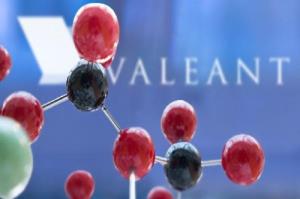Can Valeant Bulls Stomach Double-Digit Revenue Declines?

Valeant (VRX) reports Q4 earnings February 28th. Analysts expect revenue of $2.17 billion and eps of $0.98. The revenue estimate implies a 2% decline Q/Q and a 12% Y/Y. Investors should focus on the following key items.
Can VRX Bulls Stomach Double-Digit Revenue Declines?
Valeant's lead investor, Bill Ackman of Persing Square (PSHZF), bailed on the stock in March 2017. Shortly thereafter VRX hit a 52-week low of $8.31. The stock has been on a tear ever since, more than doubling. Management has announced new products like Siliq (psoriasis) and Vyzulta (glaucoma). The company has hived off non-core assets as promised. Valeant announced nearly $4 billion of divestitures over the past two years, which has allowed the company to pare $6 billion in debt.
I assumed buyers knew the company was desperate and would wait for it to go belly-up and pick off pieces of the carcass, or make low-ball offers for non-core assets. It hasn't worked out that way. White hot financial markets and animal spirits since President Trump's election have been boons to Valeant's asset sales. After cutting its debt load by $6 billion bulls have trumpeted the company's survival, and the shares have spiked largely based on sentiment.
Of note is that Valeant recorded $2.8 billion in tax recoveries so far in FY 2017. It has also stretched its payables to improve cash flow. However, the question remains, "Where is the growth?" VRX bulls would almost have you believe Valeant is a growth company. Q3 revenue fell 10% Y/Y. It was impacted by LOE for certain products and lost revenue from asset sales. I expect more of the same this quarter. If Valeant shows another double-digit revenue decline will bulls run for the hills?
Asset Sales Could Be Done For The Moment
Valeant's Q3 EBITDA of $926 million was down 13% Y/Y and up 5% sequentially, despite the 1% sequential decline in revenue. Asset sales have allowed the company to reduce corporate overhead and cut R&D projects related to divested assets. EBITDA margin rebounded to 42% - the highest it has been since Valeant reported a 43% margin in the year-earlier period.
Asset sales might be halted for the time being. Debt repayments may slow now that Valeant will have to rely on organic cash flow. Secondly, some of the more attractive properties may have been sold already. Valeant might be left with slower growth properties going forward. Bausch & Lomb and Salix (64% of segment EBITDA) are the jewels of the company. However, U.S. Diversified and Branded Rx could be drag on revenue and earnings growth due to loss of exclusivity ("LOE") for certain brands.
Credit Metrics Are Key
I have been keenly focused on Valeant's credit metrics. Its debt/run-rate EBITDA was an alarming 8.4x in Q1 2017. The company showed some progress after reducing it to 6.8x in the most recent quarter. S&P recent affirmed Valeant's low credit rating, but suggested it could be reduced to CCC (close to default levels) if its operations were to sour:
S&P affirmed the company's corporate credit rating at B-, but the next level down would be CCC, which means there's a serious risk of default. S&P's affirmation comes following Valeant's plan to issue $1B in eight-year secured paper in order to pay off $1B in unsecured debt maturing in 2020.
The agency sees the transaction as a "modest credit positive," but continues to expect leverage to top 7x this year and next. Though Valeant's scale and revenue diversity are favorable, says S&P, the company faces very high exposure to patent losses over the next two years without a product pipeline sufficient to offset lost revenue.
Asset sales may have aided Valeant's credit metrics. For instance, by waiting until the end of a fiscal quarter to sell assets and pare debt, Valeant got the benefit of the divested company's quarterly EBITDA. The numerator (debt) in the debt/EBITDA calculation was lowered by debt pare downs; the denominator (EBITDA) may have been higher by waiting until the end of the quarter to divest an asset. One asset sales are halted these types of distortions may go away.
Secondly, the company must prove it can generate revenue from new products to help offset LOE. Valeant built is reputation as a serial acquirer of brands. Now it's time to prove it can run a traditional pharmaceutical company and deliver new products from its R&D pipeline.



